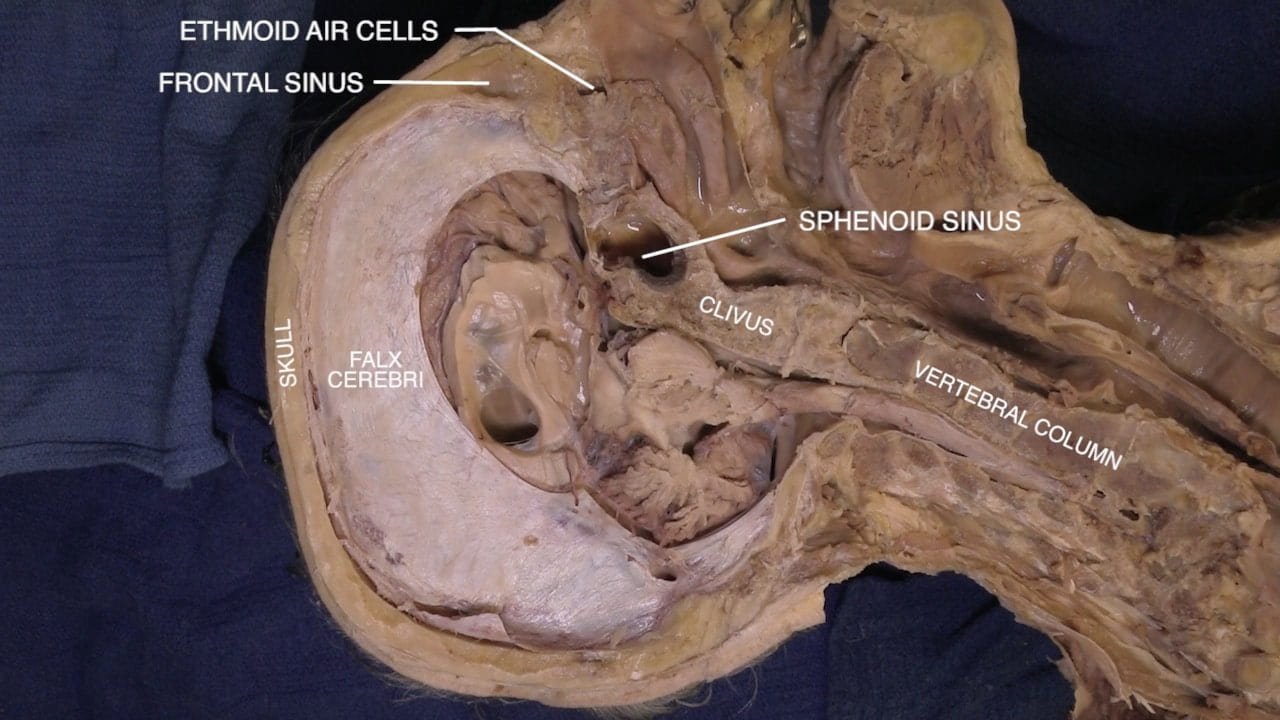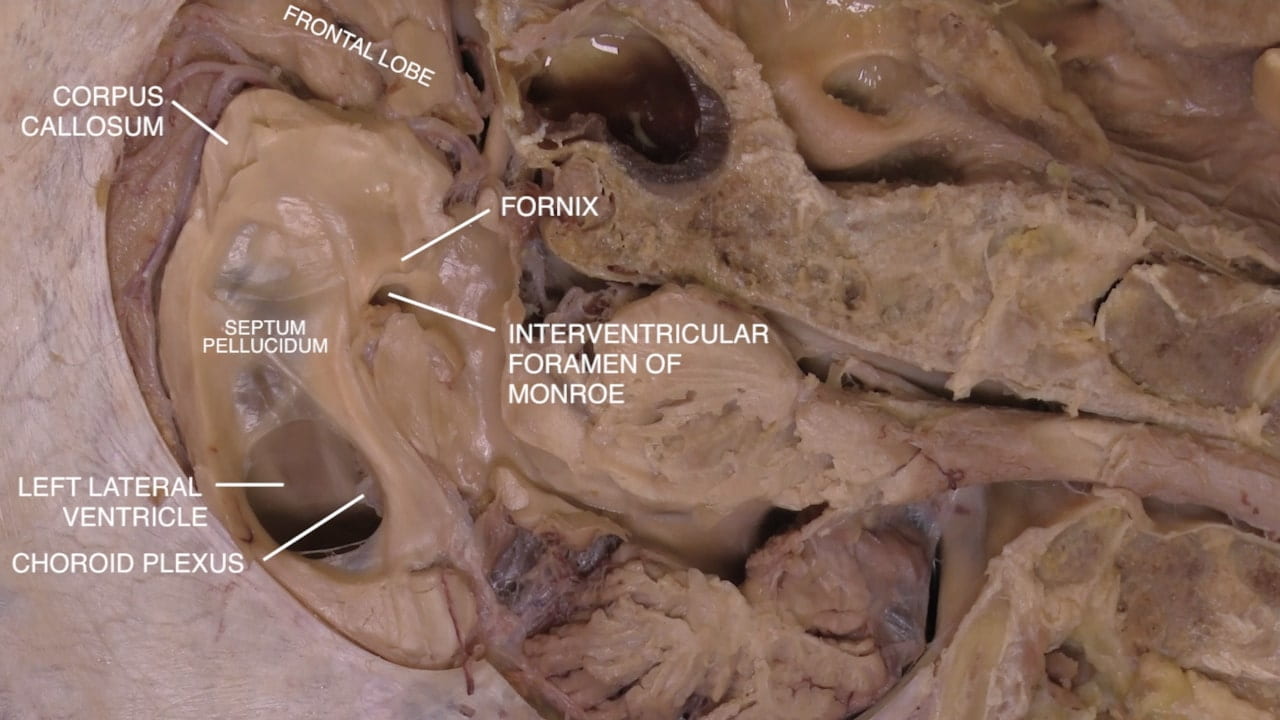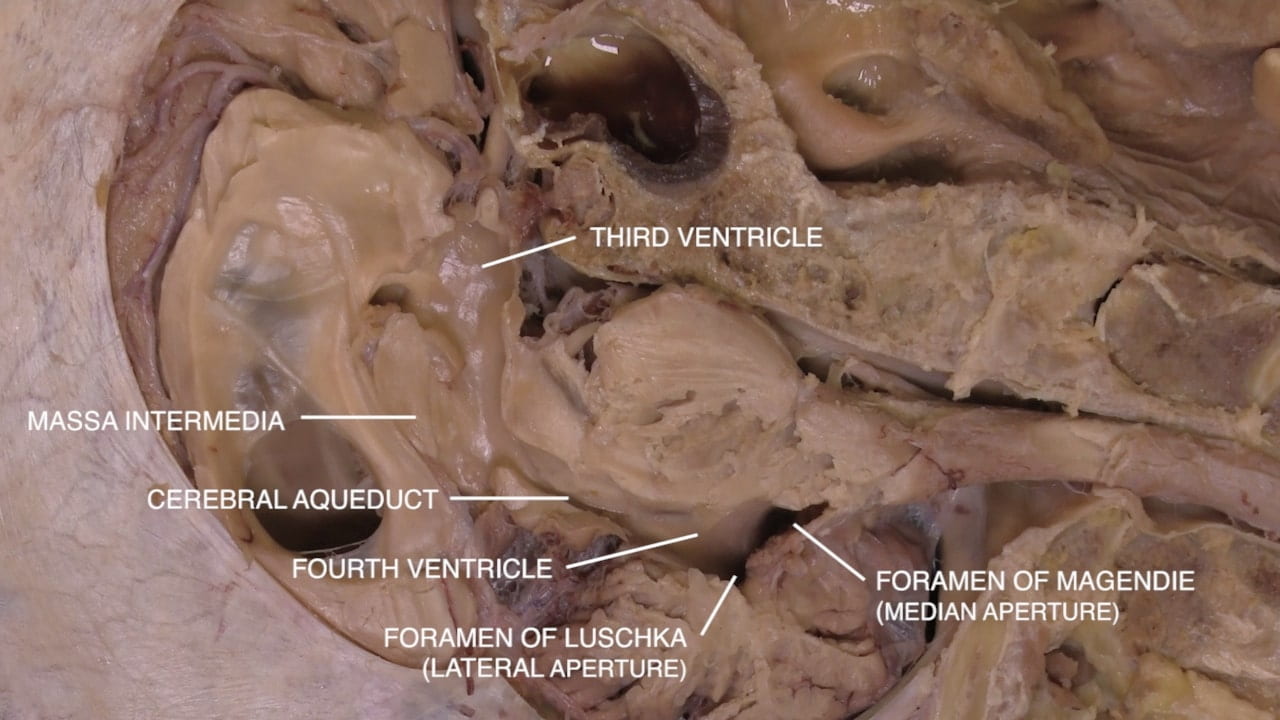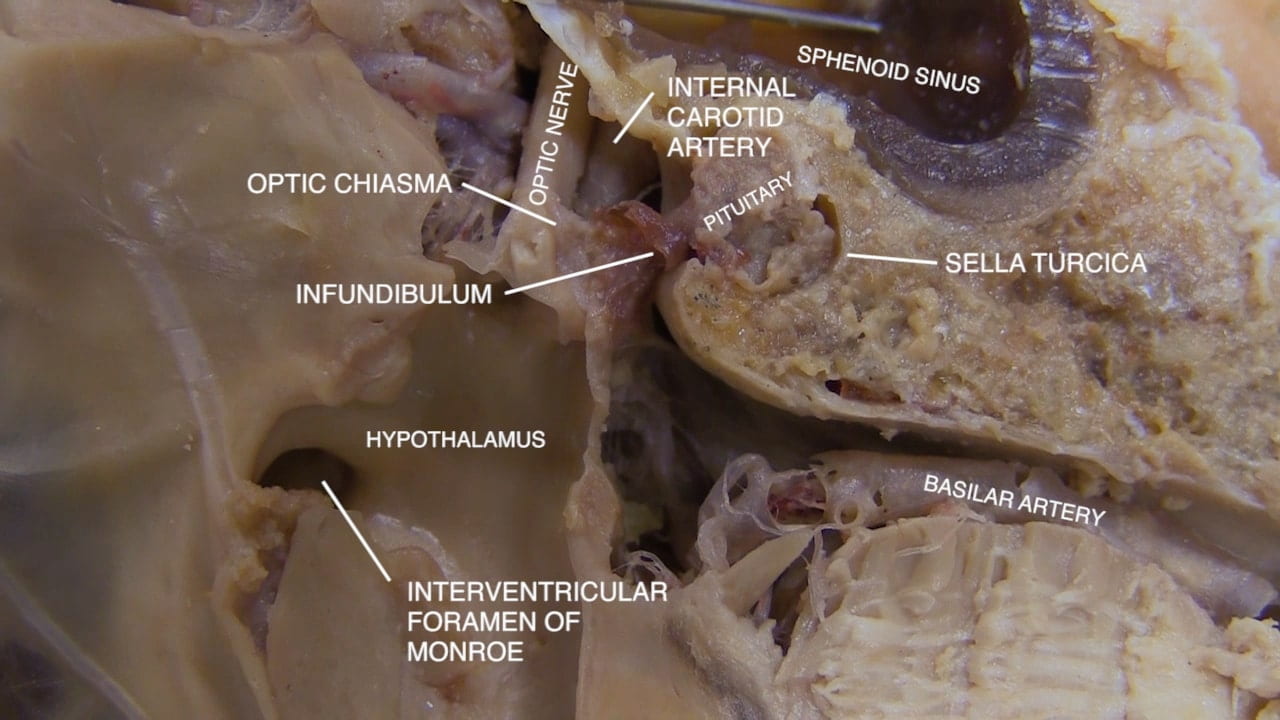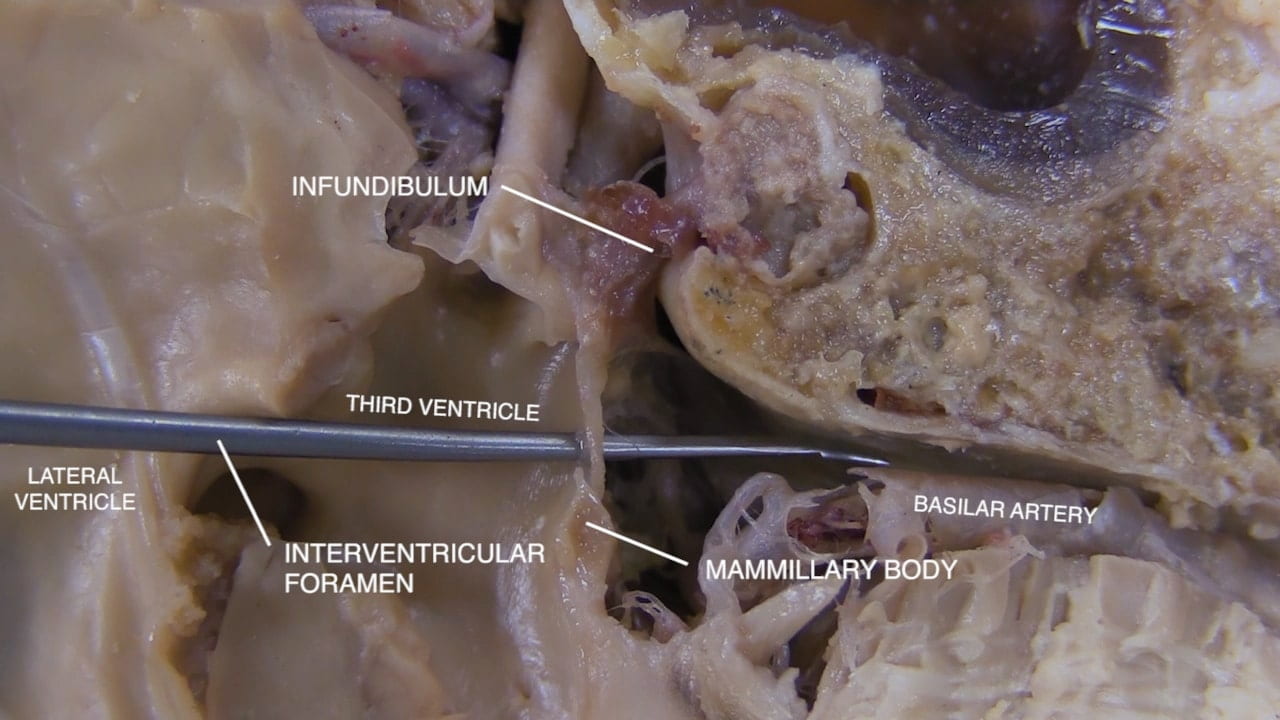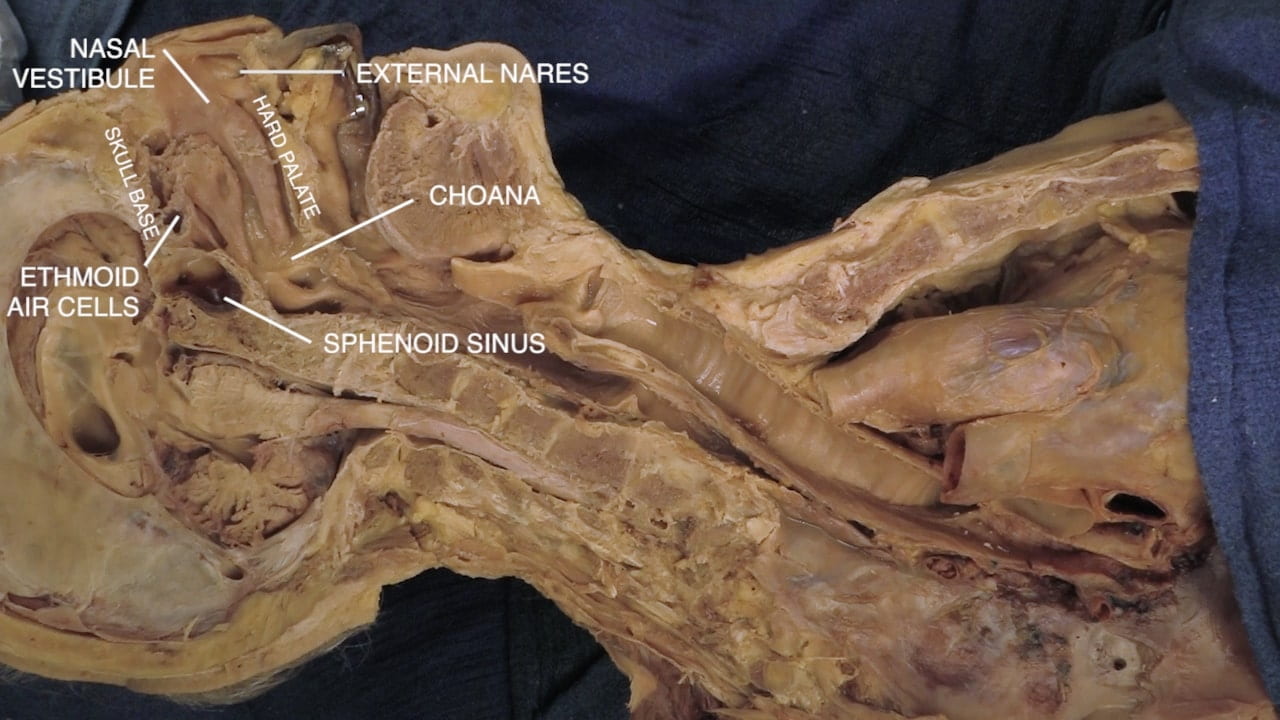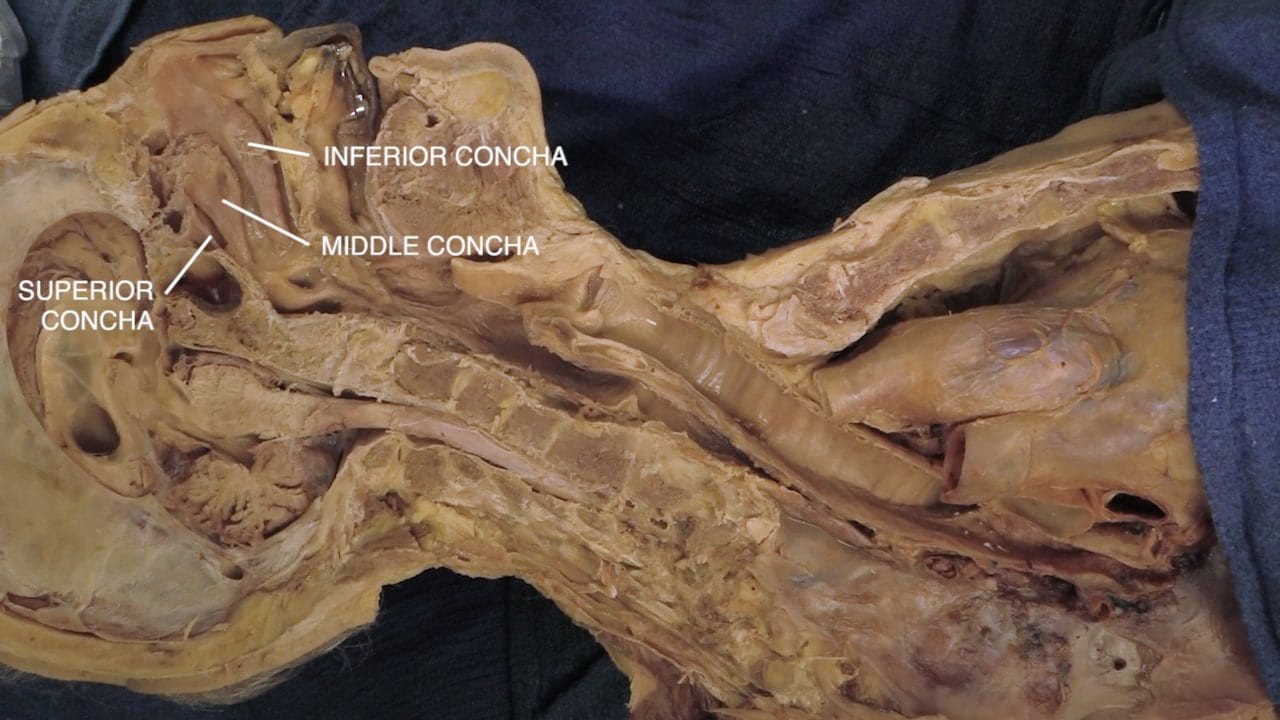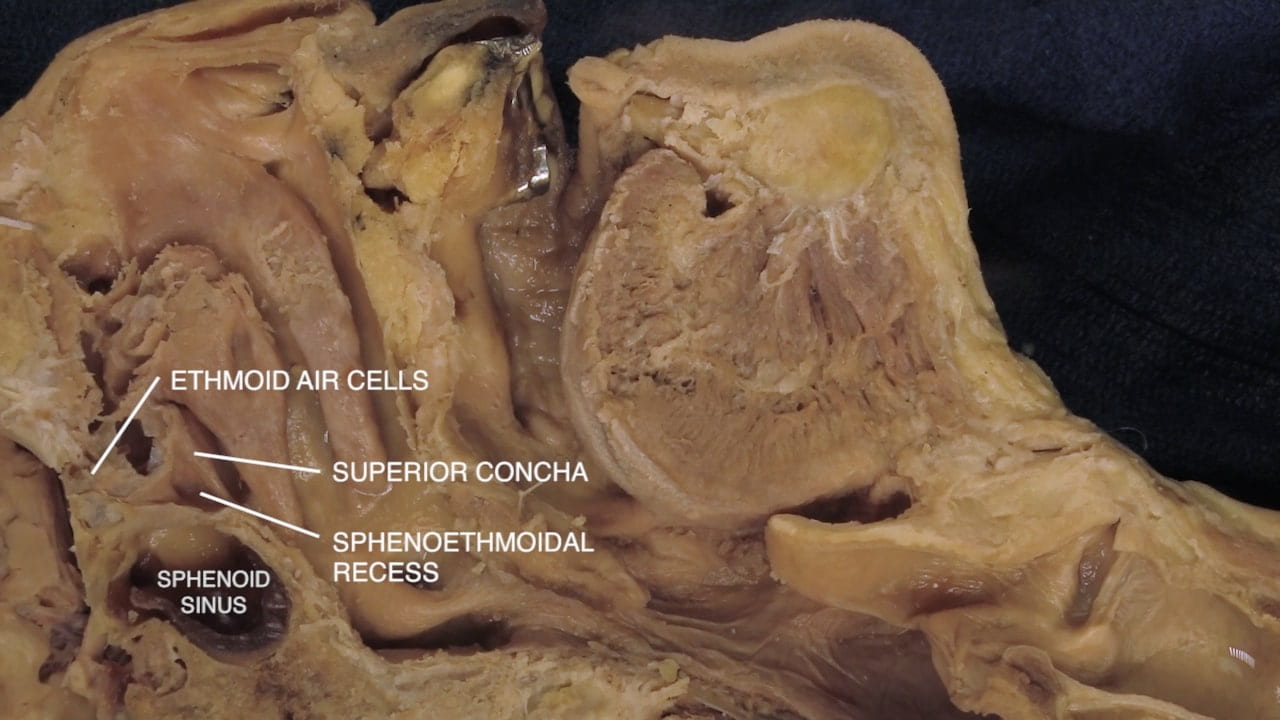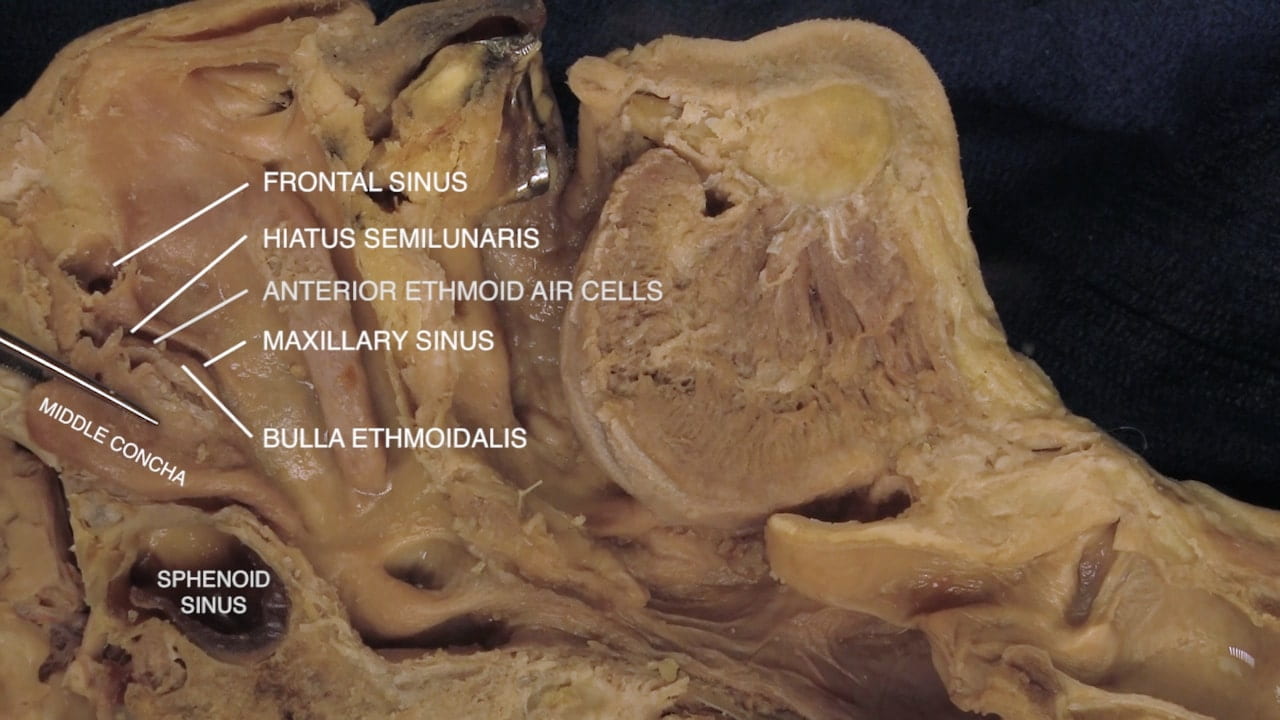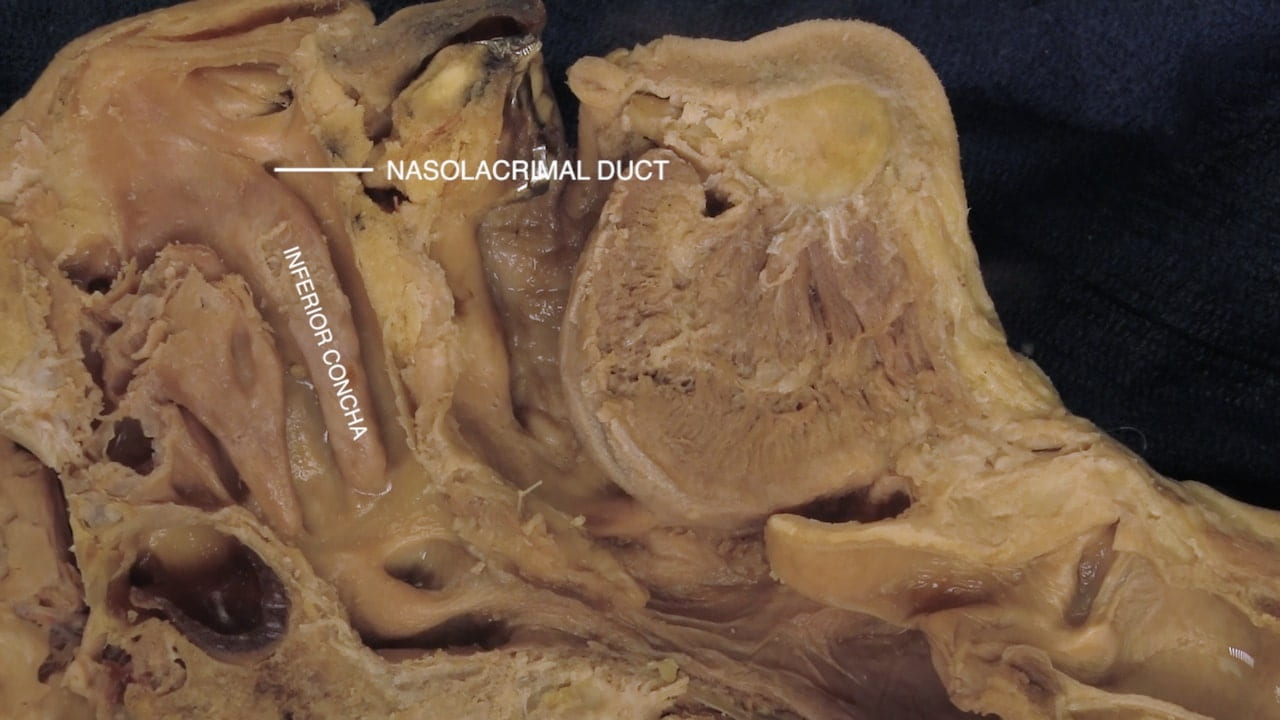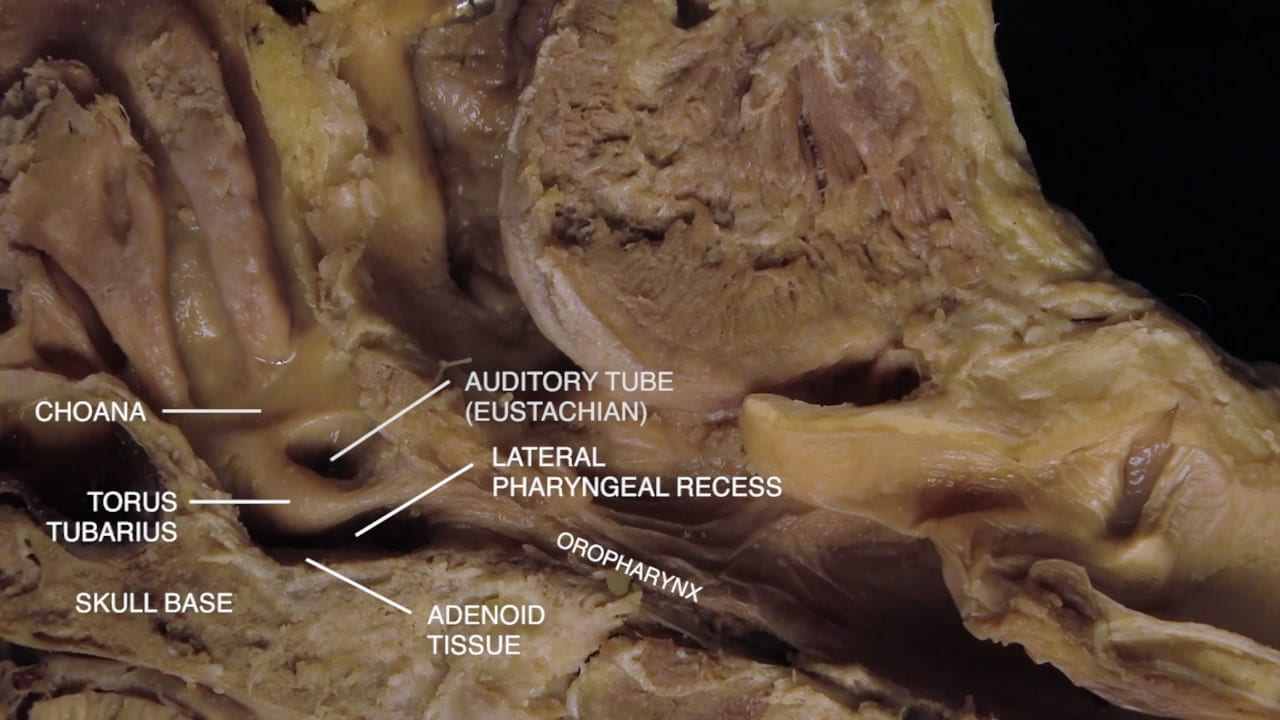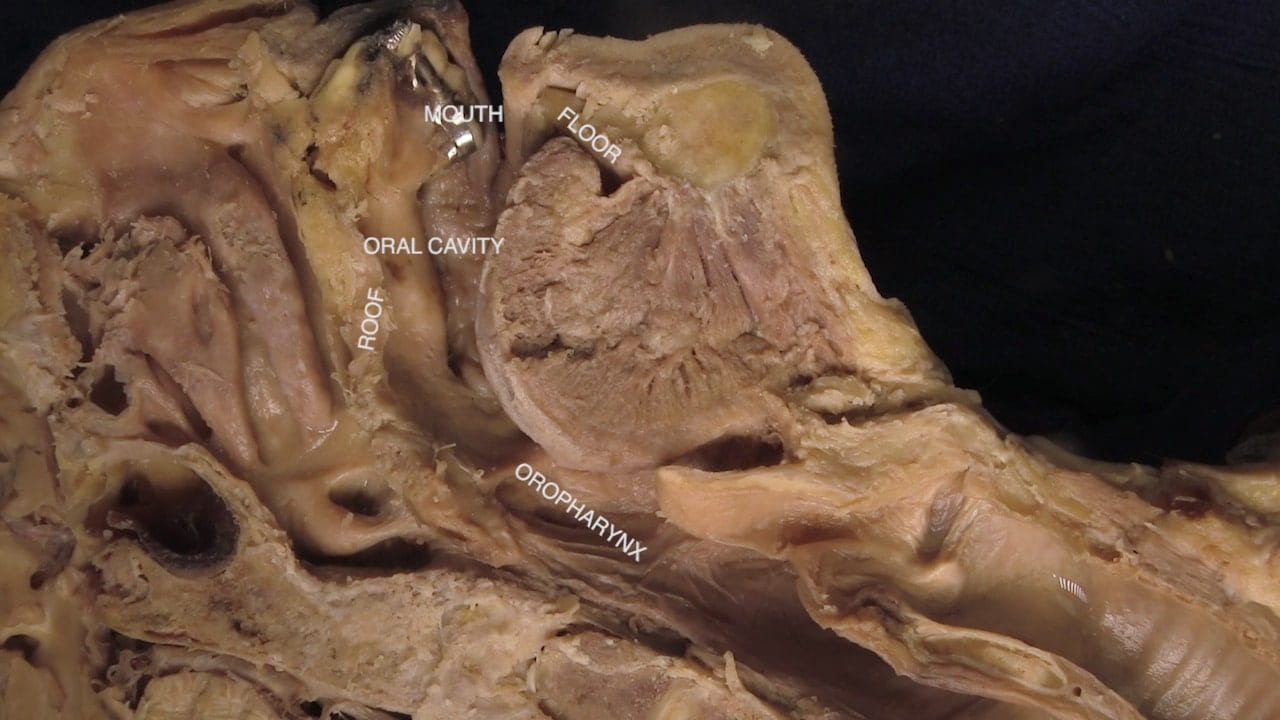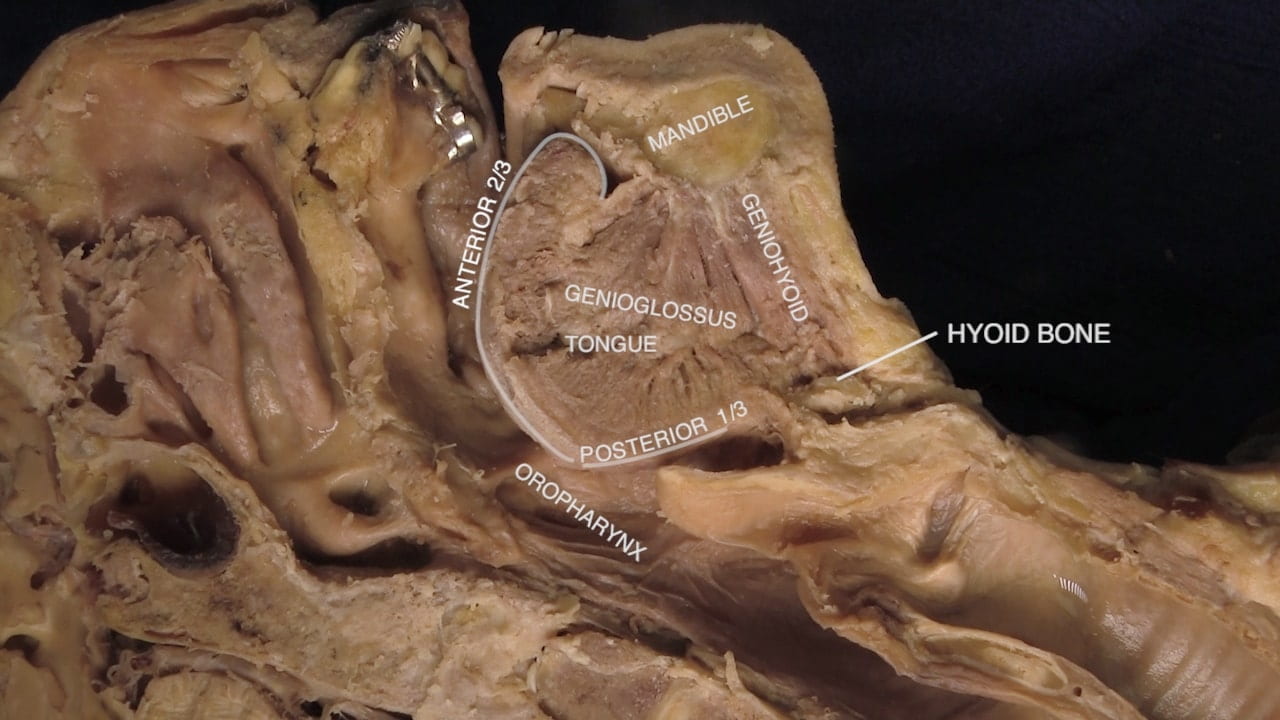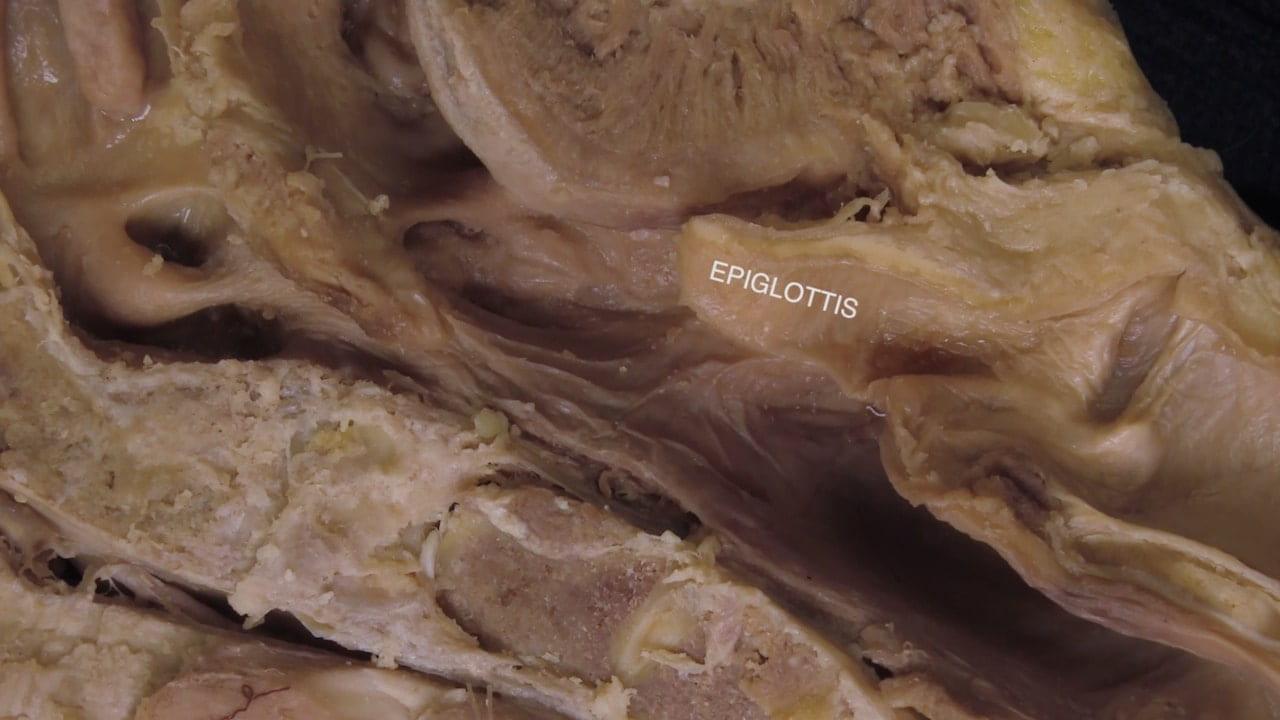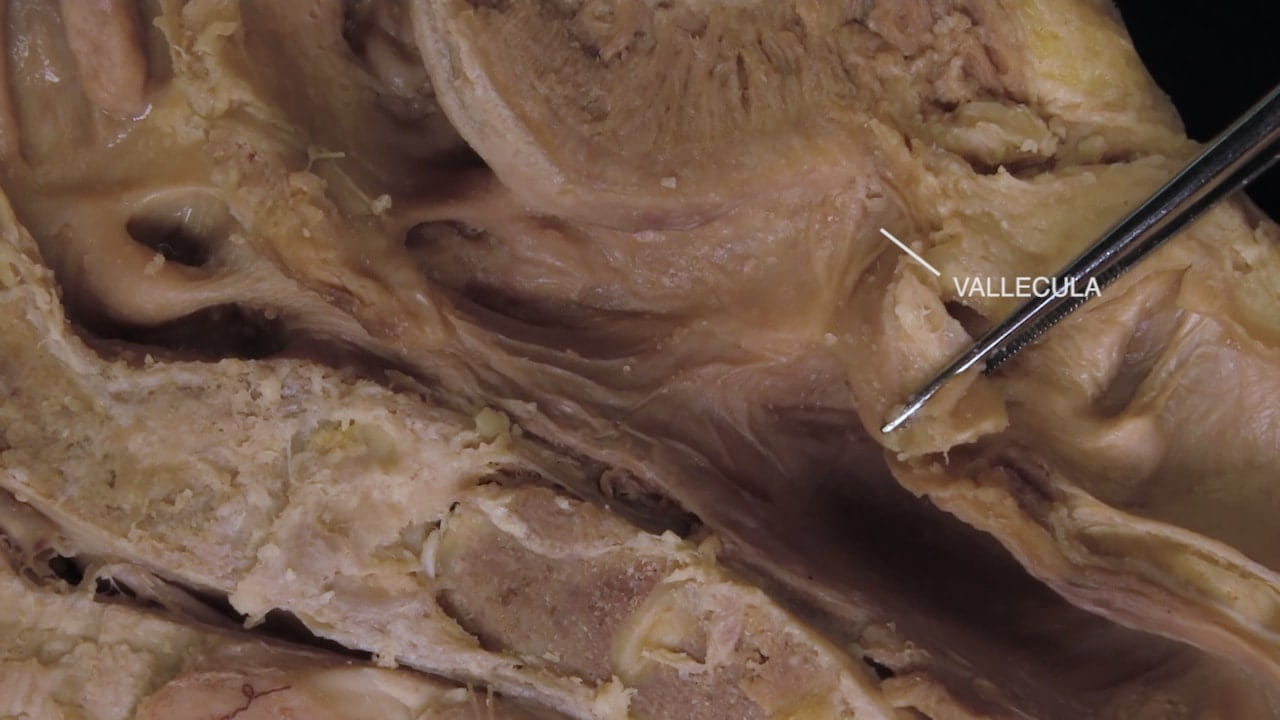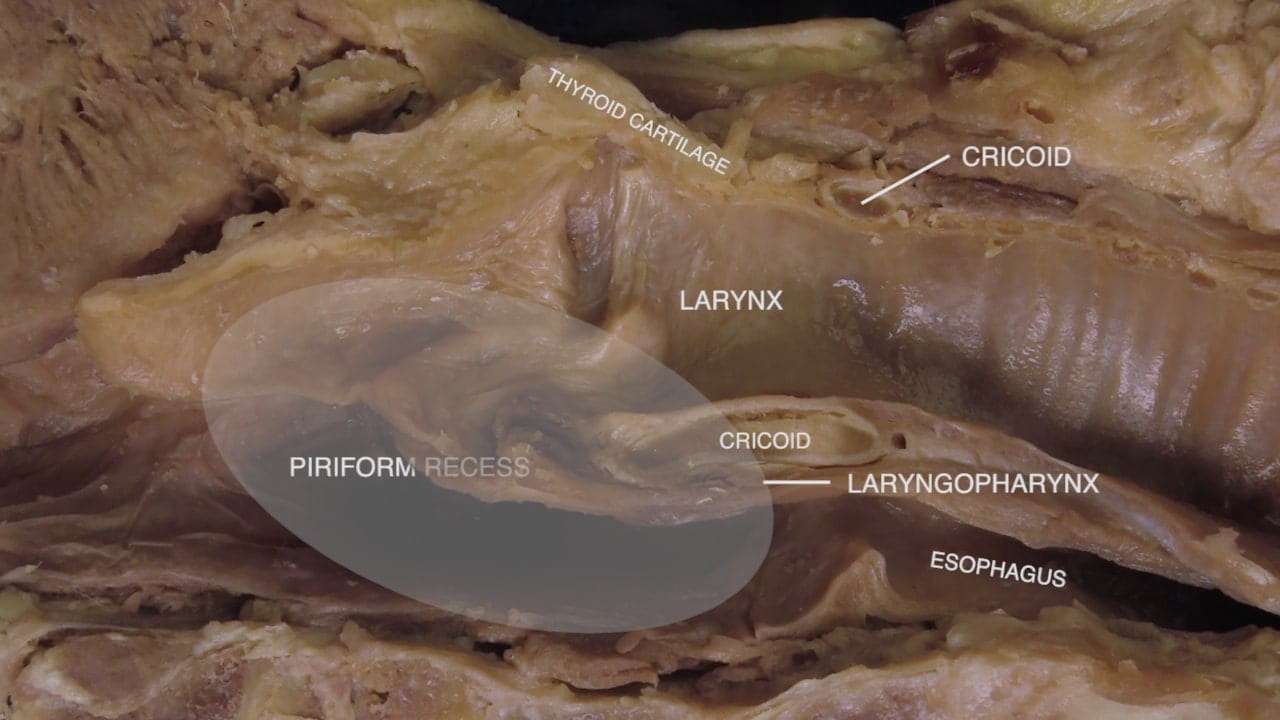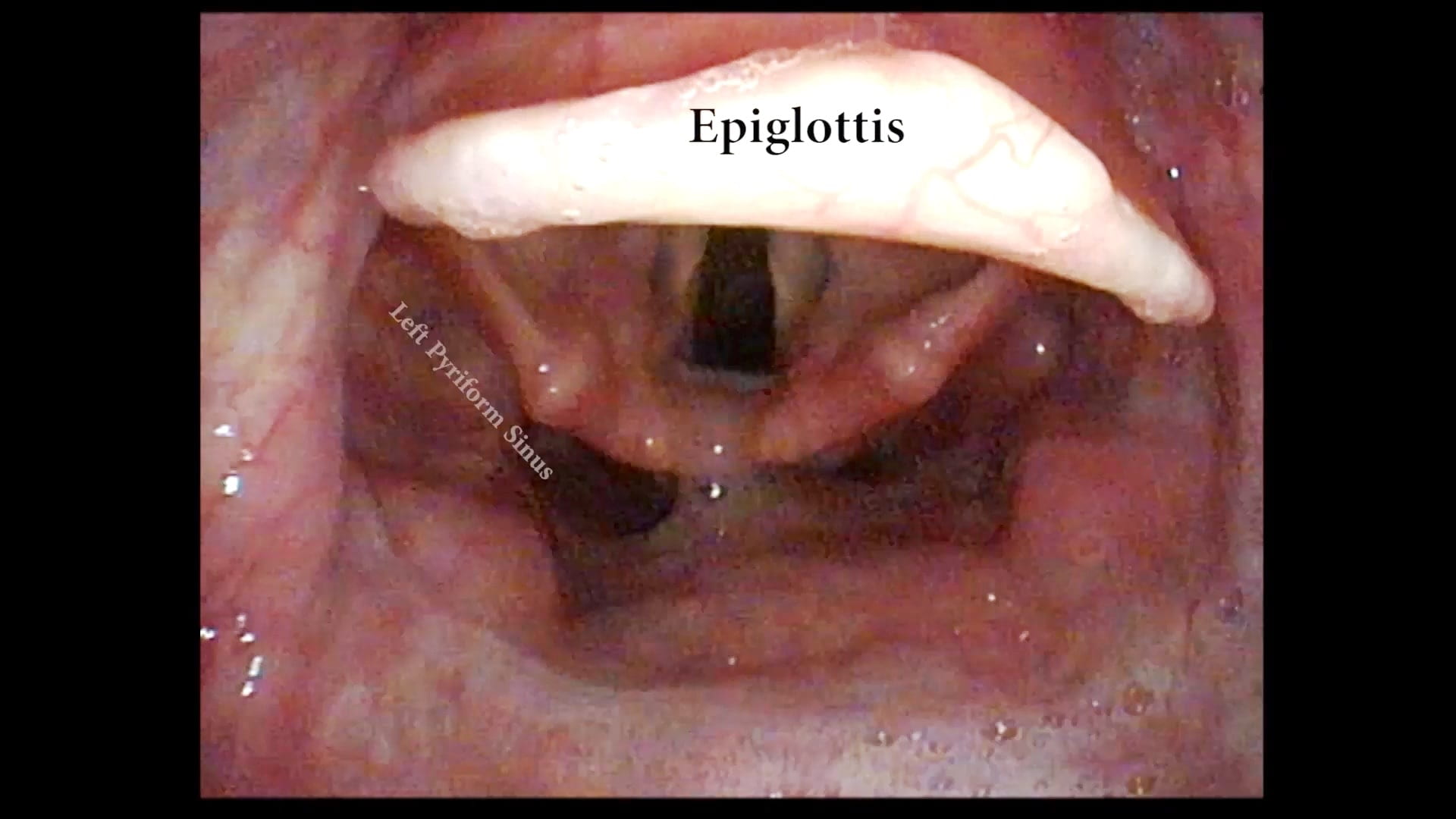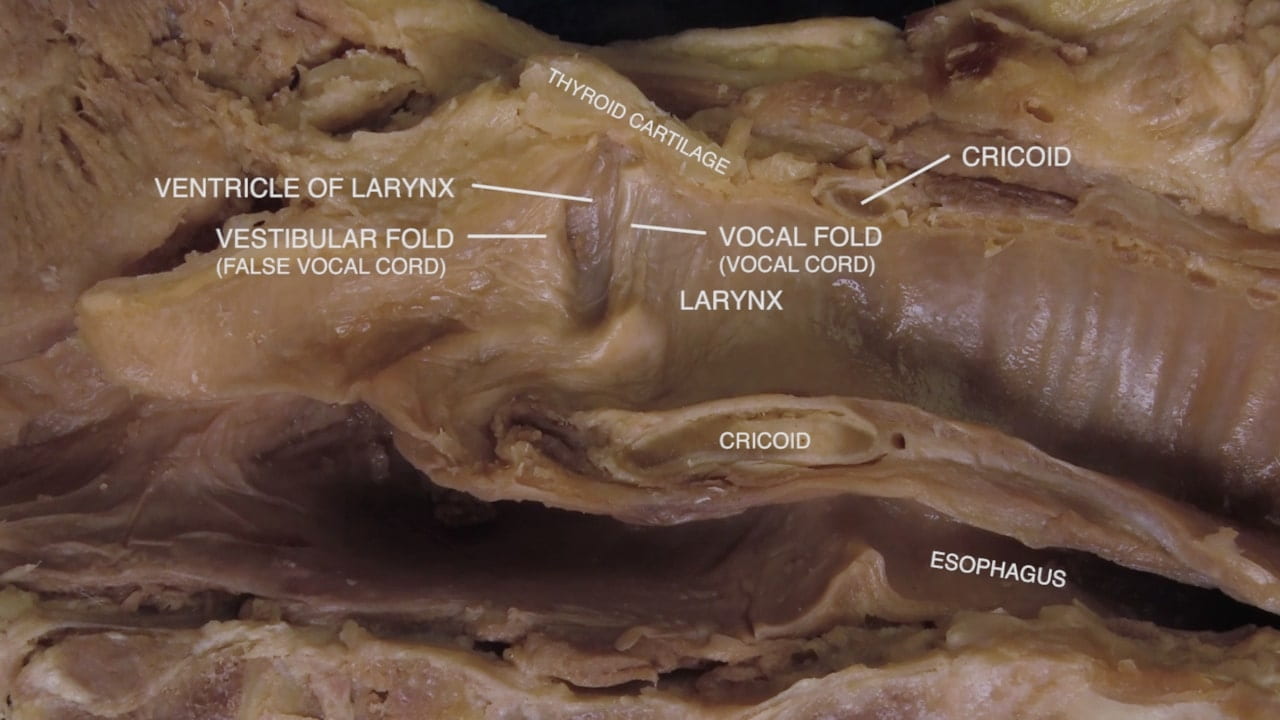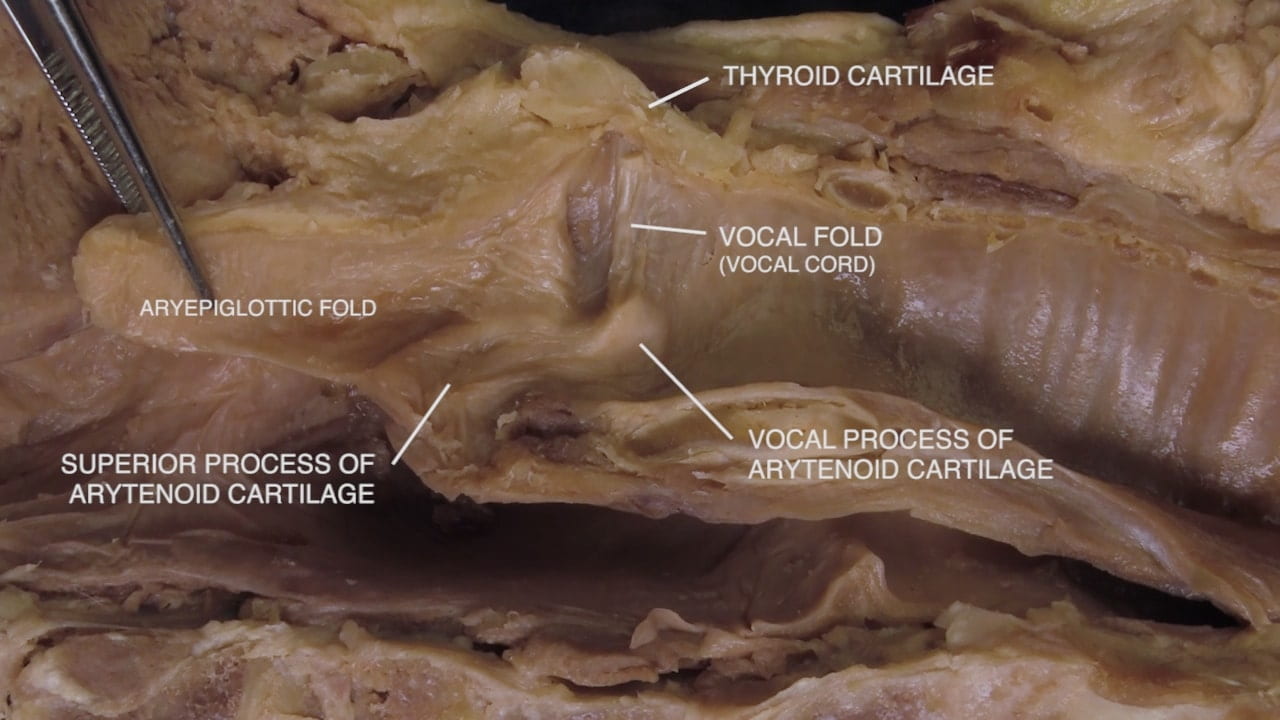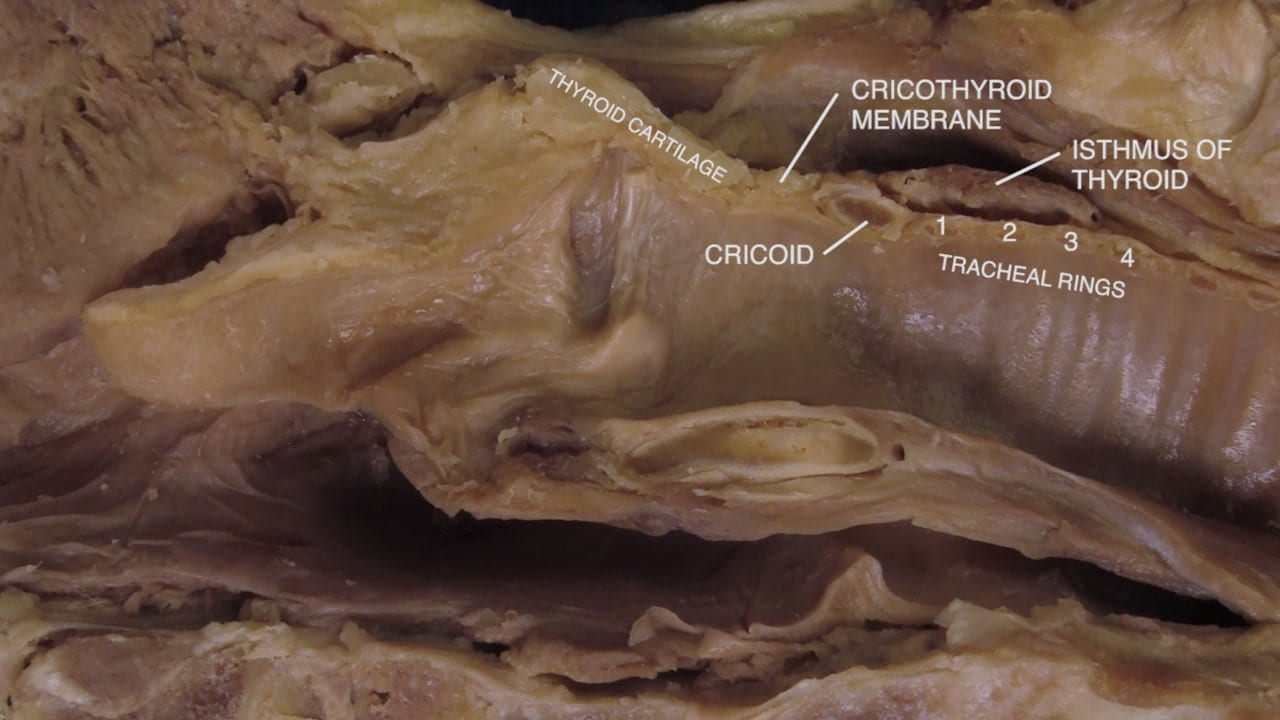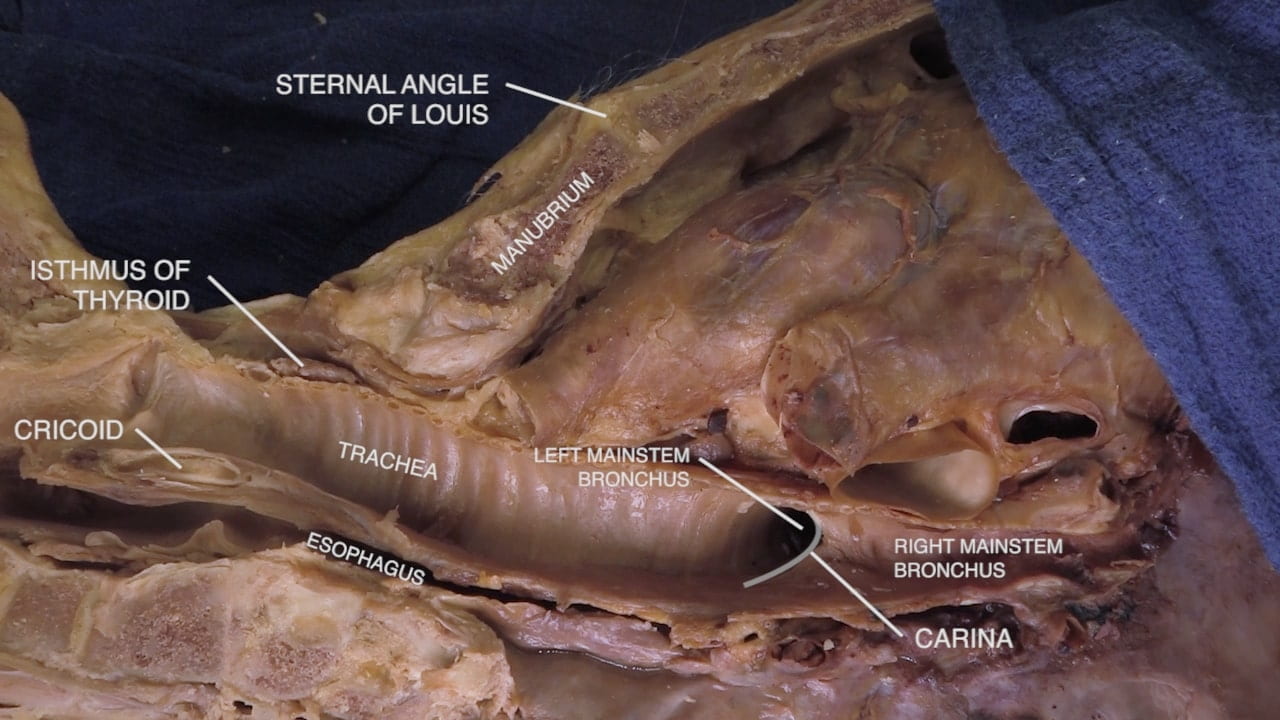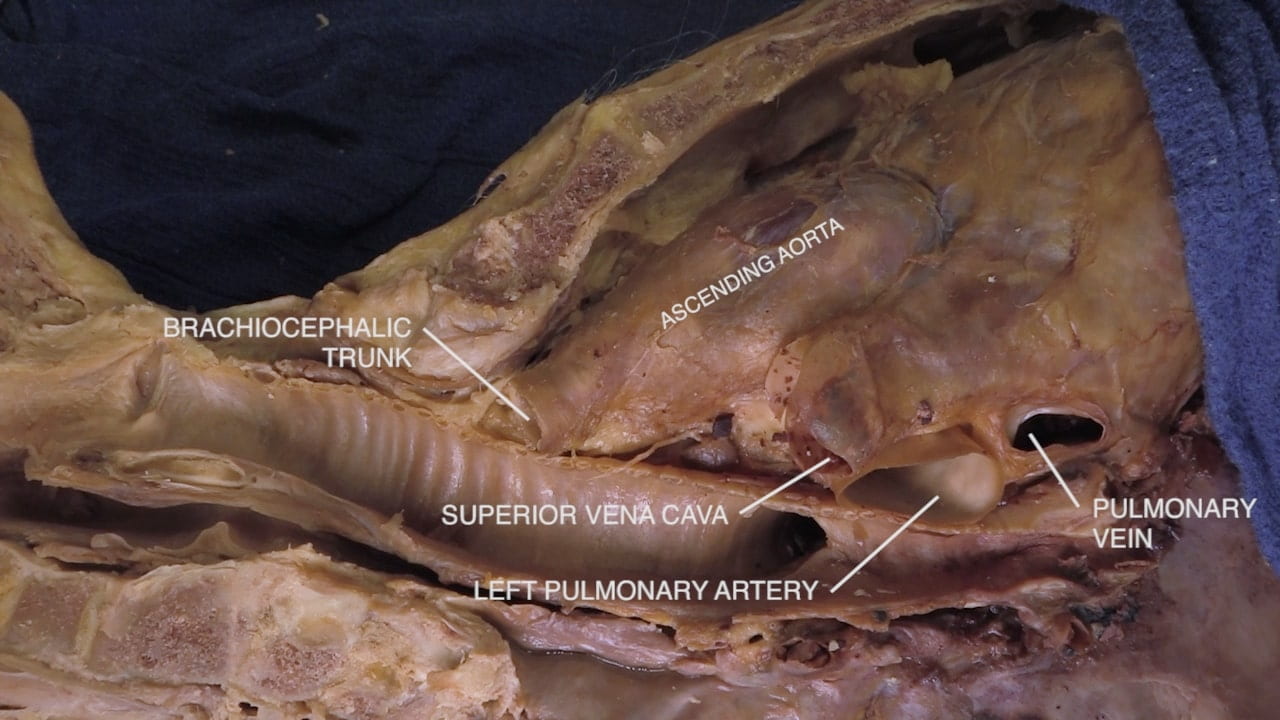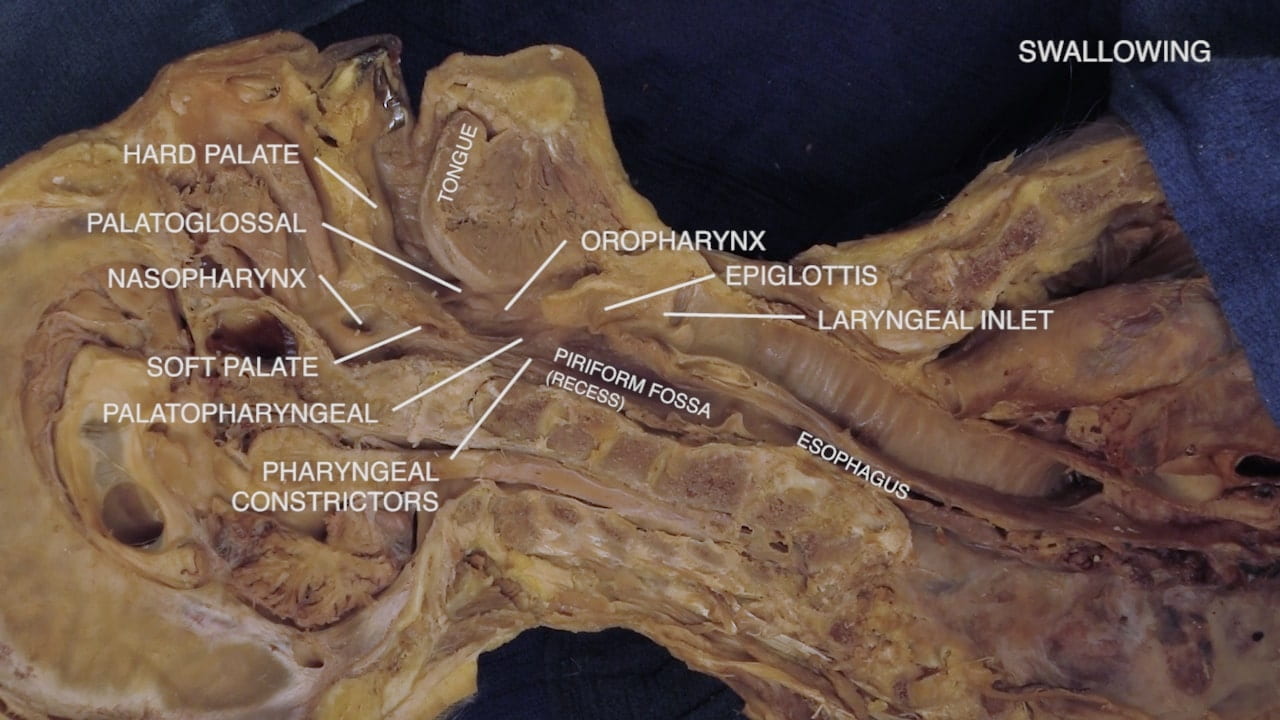Midline Head and Neck
Lab Summary
In this lab the head and neck to upper thorax are taught. The approach is from a midline sagittal plane dissection of these structures. Skull base, nasal sinuses, nasopharynx, oral cavity, oropharynx and upper airway are emphasized.
Lab Objectives
- Describe structures of midline brain.
- Describe relationship of nasal and paranasal structures to base of brain.
- Describe the positions of the nasal cavity, nasopharynx, oral cavity, oropharynx, larynx and laryngopharynx.
- Describe the position of the paranasal sinuses.
- Describe the position and boundaries of the tonsillar fossa.
- Describe the vocal apparatus.
- Describe motor control of swallowing.
Lecture List
Sagittal Head and Neck Part I, II & III
Midline Head and Neck Part I
Sagittal Hemisection
Midline Brain
Midline Head and Neck Part II
Nasal Cavity
Midline Head and Neck Part III
Oral Cavity
Larynx
Airway
Anterior to the laryngopharynx and protected by the epiglottis, identify the larynx. Identify thyroid cartilage, anterior and posterior components of cricoid cartilage, vocal fold, vestibular fold, arytenoid cartilage, cricothyroid membrane, tracheal rings and isthmus of thyroid.
Question 2: What is clinical significance of the cricothyroid membrane?
Location of emergency airway access.
Upper Chest
Follow the trachea inferiorly to the carina and mainstem bronchi. Note the relationships of surrounding structures: manubrium, ascending aorta and esophagus.
Swallowing
Consider the anatomic substrate of oral intake and swallowing.
Motor Control:
- Trigeminal (V3) – Muscles of mastication
- Hypoglossal (XII) – Tongue
- Vagus (X) – Soft palate, pharynx, epiglottis, esophagus


